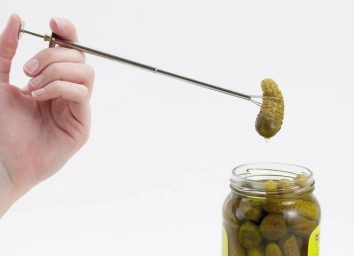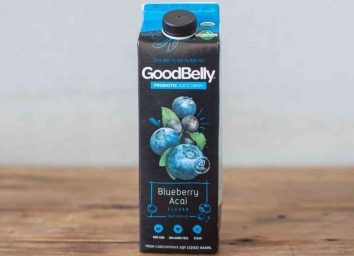13 Fiber-Spiked Foods You Should Second Guess
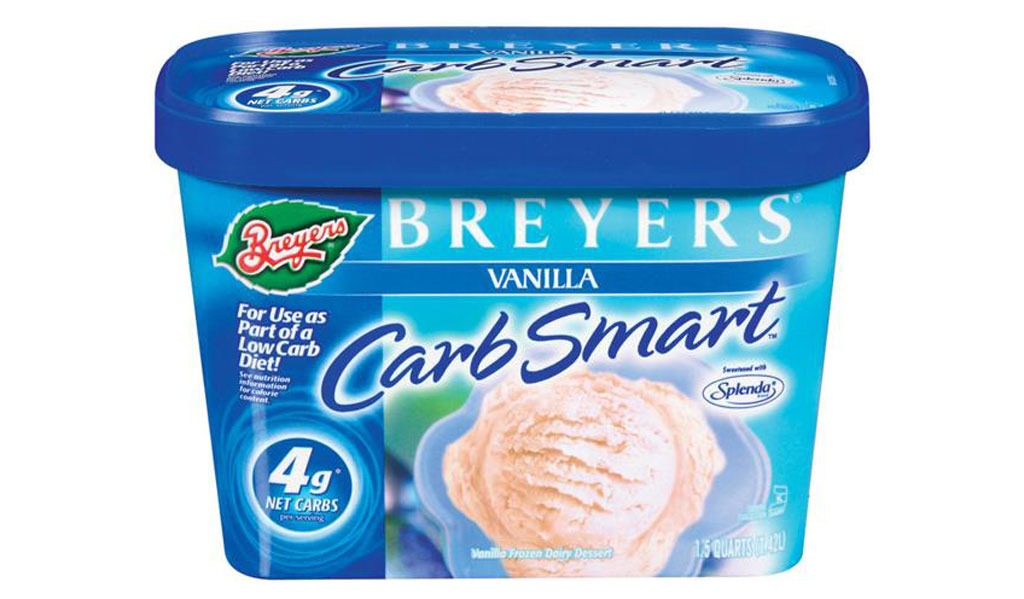
There's no such thing as a magic weight-loss pill, but dietary fiber is pretty darn close. People who follow diets high in the macronutrient are less likely to be obese and have a lower risk of heart disease, stroke, high cholesterol, and type II diabetes, according to a study in The American Journal of Clinical Nutrition. Fiber is so important, in fact, that in 2016, the FDA increased the recommended daily intake from 25 grams to 28 grams. There's only one problem: According to the National Health and Nutrition Examination Survey conducted by the CDC, most Americans consume less than half the recommended daily intake.
The solution seems simple: eat more fiber. Unfortunately, it's a bit more complicated than that. While the nutrient occurs naturally in vegan foods like fruits, veggies, nuts, beans, and grains, these whole-food sources aren't the only way you can consume fiber.
As opposed to the aforementioned sources of "dietary" fiber, there are also many types of "functional" fibers, which are ingredients extracted from their natural sources and then used as additives to fortify foods and drinks. Although studies have found that supplemental fibers demonstrate many of the same benefits of dietary fiber, not all functional fibers will convey all of the same benefits of dietary fiber. That can be a problem if you rely solely on processed foods that only use one type of functional fiber—which means you could limit your benefits. For example, while certain dietary fibers can slow digestion and reduce spikes in blood sugar, you won't reap these benefits if you only eat foods with the added fiber cellulose, which is limited to assisting with regularity.
Another issue? Many food manufacturers will add fiber to their products to "increase the health factor," but it ends up just being a sneaky way to convince you junk food is good for you, explains Sarah-Jane Bedwell, RD, LDN, a Nashville-based nutritionist. She tells us this could "lead you to believe you can eat more since they tout their 'health' benefits." That could be a major problem since the negative characteristics of some highly-processed, added-fiber foods may outweigh their potential good.
To help you familiarize yourself with different types of functional fibers, we found a few types of foods that would usually never contain the nutrient. Read on to see which added fiber foods are total flubs and which could be effective supplements.
Eat This! Tip:
If your diet is lacking in fiber, it can be beneficial to incorporate a few foods with added fiber to your diet to close the gap between recommended and actual intake. However, Libby Mills, MS, RDN, LDN, and Spokesperson for the Academy of Nutrition and Dietetics, advises that you primarily "Stick with whole foods that are naturally good sources of fiber like fruits, vegetables, legumes and whole grains" since you'll not only reap their various fiber benefits, but additional benefits like protein, antioxidants, vitamins, and minerals. Check out these 30 High-Fiber Foods to amp up your energy levels, keep your hunger in check, lose weight, and maintain good health on track.
Greek Yogurt
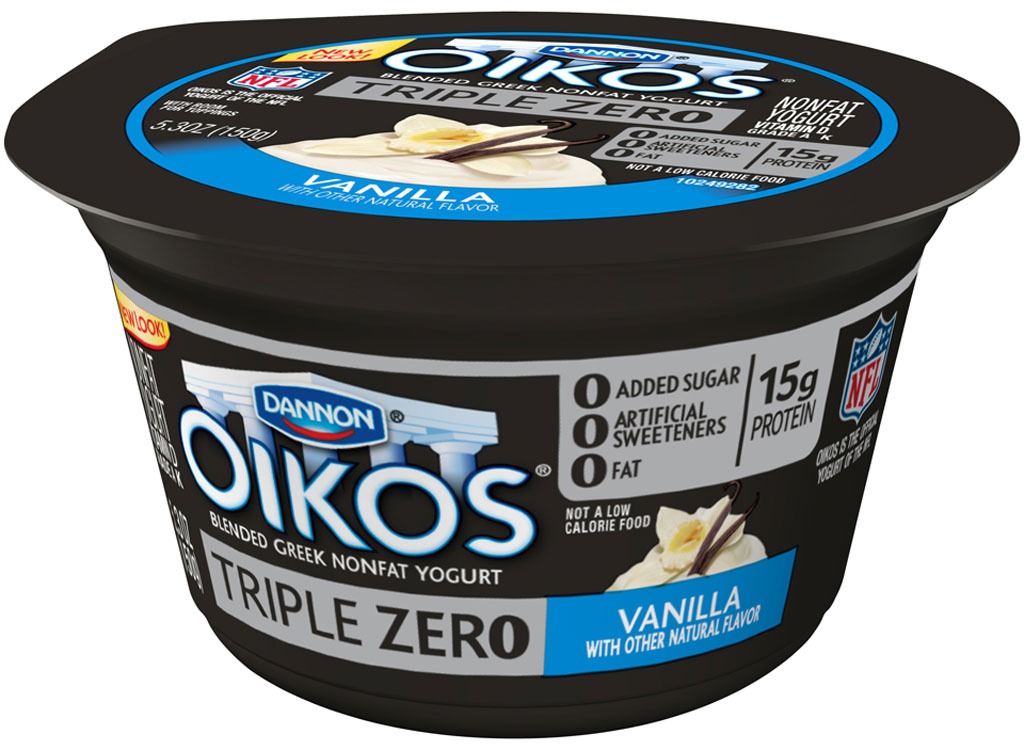
For Example: Dannon Oikos Triple Zero Greek Nonfat Yogurt
Per 5.3 oz: 120 calories, 0 g fat (0 g saturated fat), 65 mg sodium, 14 g carbs (6 g fiber, 6 g sugar), 15 g protein
Cultured from milk and enzymes, no yogurt should have fiber in it. That being said, Dannon's addition of chicory root allows the yogurt's six grams of naturally-occurring sugar to be matched with an equal amount of digestion-slowing fiber. Chicory root fiber is a source of inulin, a prebiotic that may help feed those live active probiotic cultures and can help minimize spikes in insulin after a carb-heavy meal.
The Bottom Line: In terms of Greek yogurts, Dannon Oikos made it on our best list because they don't add any sugar or artificial sweeteners (it does, however, use "natural" zero-calorie sweetener stevia) and its high in protein.
Protein-Based Power Bars
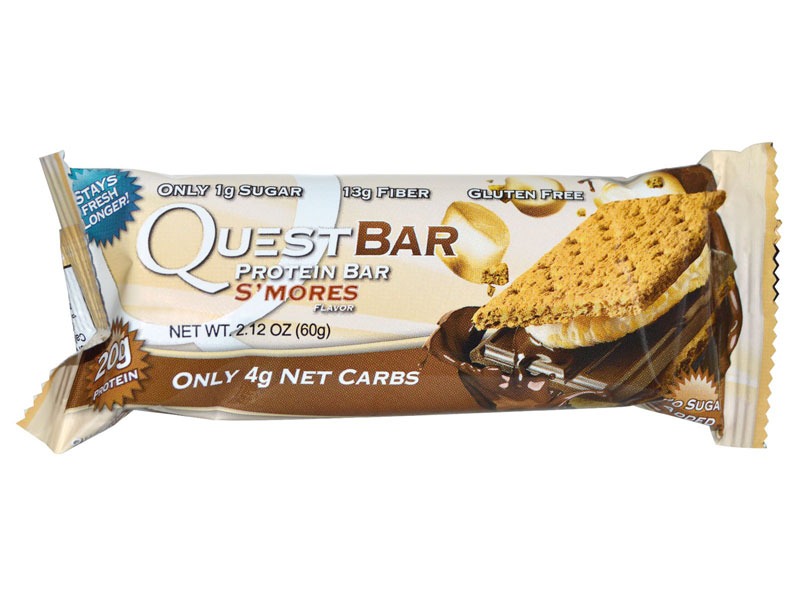
For Example: QuestBar Protein Bar S'Mores Flavor
Per 1 bar (60 g): 180 calories, 8 g fat (3 g saturated fat), 180 mg sodium, 22 g carbs (13 g fiber, 1 g sugar, 5 g sugar alcohols), 20 g protein
Besides the functional fiber added to this bar—soluble corn fiber—the only other source might be almonds. Otherwise, Quest Bars are mostly made up of a protein blend, water, sugar alcohols, artificial sweeteners, oils, and gums. Although your first instinct might be to turn up your nose at any corn product, soluble corn fiber has many of the same benefits associated with intact dietary fiber, including acting like a prebiotic by being partially fermented into anti-inflammatory short-chain fatty acids (SCFA), improving regularity, and when used in place of other carbs, providing a lower glycemic response (i.e. not spike your blood sugar as much). Another bonus: Soluble corn fiber has been found to be better tolerated in terms of GI discomfort than both dietary fiber and common functional fiber inulin.
The Bottom Line: It might be the self-proclaimed "favorite protein bar of America," but there are 16 Eat This!-Approved Nutrition Bars out there that are made with whole foods and fewer chemicals.
Ice Cream
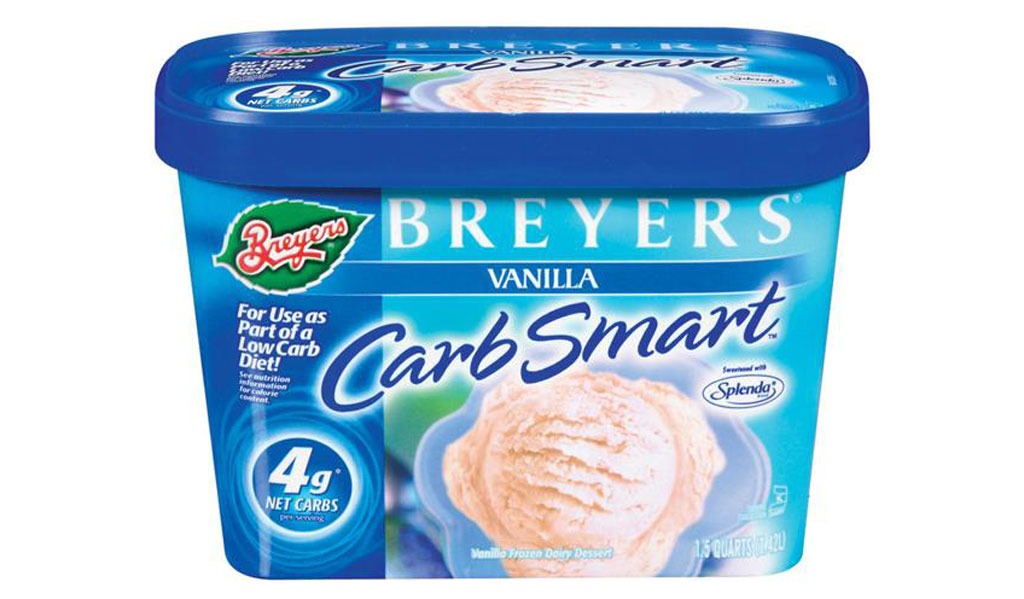
For Example: Breyers CarbSmart Vanilla
Per 1/2 cup (66 g): 120 calories, 6 g fat (3.5 g saturated fat), 50 mg sodium, 14 g carbs (4 g fiber, 4 g sugar, 5 g sugar alcohol), 2 g protein; 6% DV calcium
Have you ever seen fiber in real ice cream? Neither have we. And that's because it doesn't belong there. The fiber you see in Breyers CarbSmart is from polydextrose, a fiber that is fermented by good bacteria in your gut, which produces anti-inflammatory compounds and has beneficial effects on bowel function, according to a study in Nutrition Review.
The Bottom Line: Regardless of any fiber-related benefits, this concoction still ranked worst in our ranking of diet ice creams because it's high in calories, is made with artificial sweeteners, and contains sources of trans fats (mono and diglycerides).
Sugar
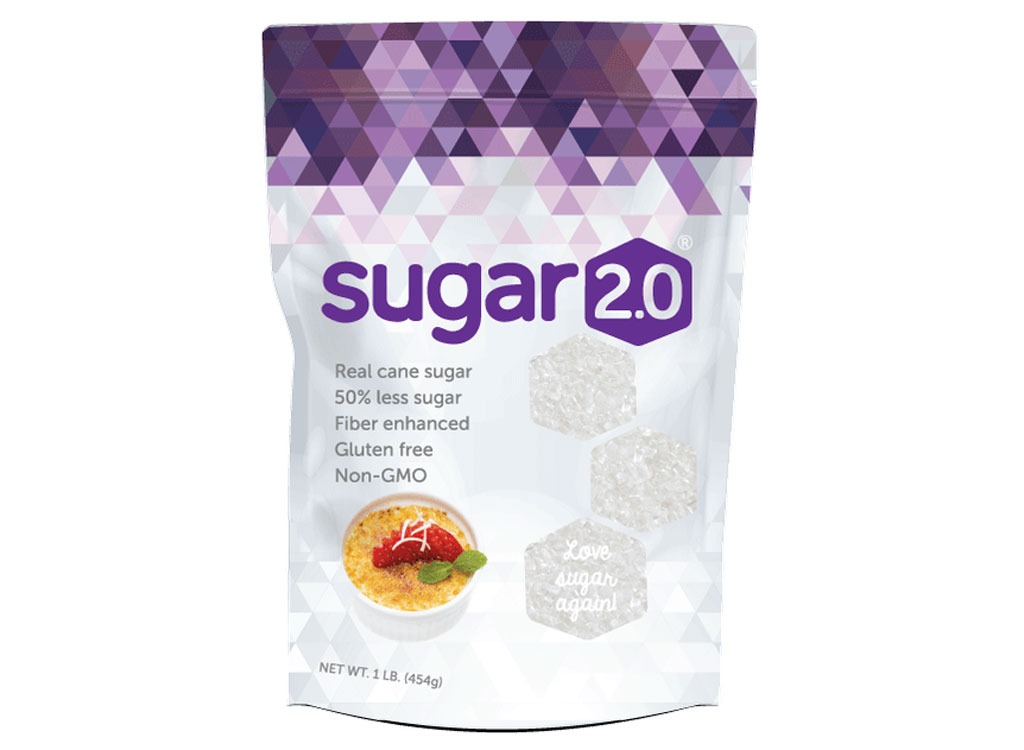
For Example: Sugar 2.0
Per 1 tsp: 10 calories, 0 g fat, 0 mg sodium, 4 g carbs (2 g fiber, 2 g sugar), 0 g protein
Chemically, sugar is a compound made of one glucose molecule and one fructose molecule. It's not fiber. This sugar is different. It links a sugar molecule to a prebiotic soluble fiber so you get half the sugar for the same volume.
The Bottom Line: There's not a lot of information regarding what type of fiber is used in this product, but anything that helps slash sugar intake is a good deal in our book!
Juices
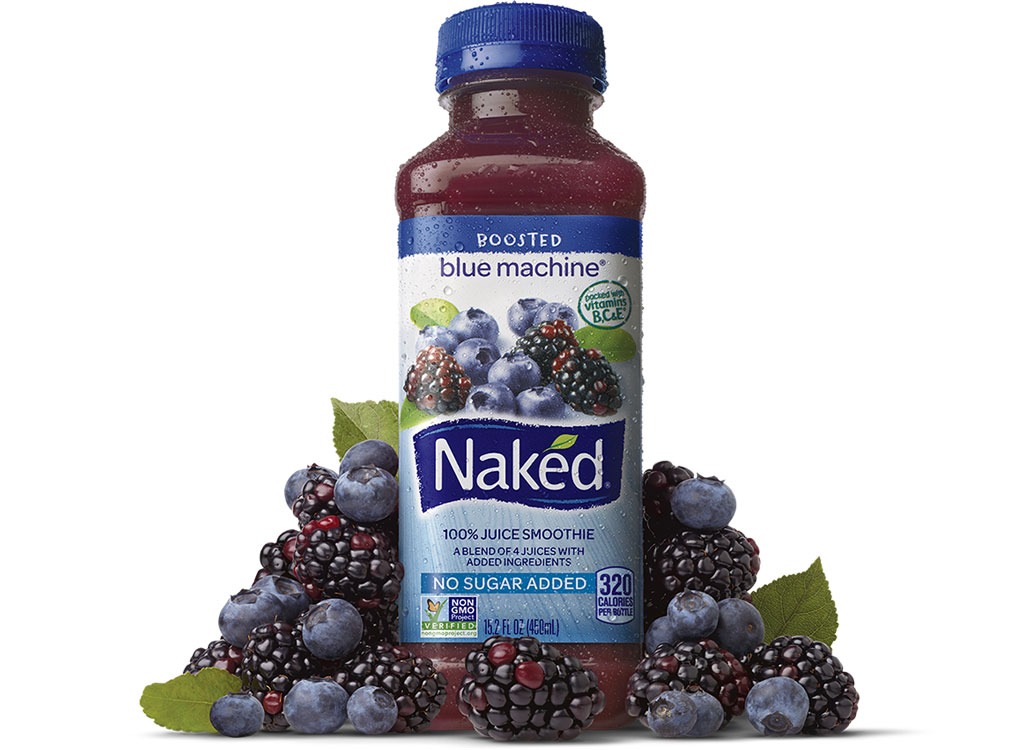
For Example: Naked Boosted Blue Machine
Per 15.2 fl oz: 320 calories, 0 g fat (0 g saturated fat), 20 mg sodium, 76 g carbs (5 g fiber, 55 g sugar), 2 g protein
If you take a look at Naked's "Pressed" line, you'll see that juices rarely ever have more than a gram of fiber in them—and usually don't contain any. However, in this boosted drink, Naked adds chicory root fiber to help balance out the sugar.
The Bottom Line: While you may get multiple servings of fruits and some vitamin C from juice, the negatives outweigh the good—especially when it comes to weight loss. Those measly five grams of fiber will do nothing to stand up to the 55 grams (!) of sugar this drink fills you with. If you're looking to lose weight, stick with either plain water or infuse it with fresh fruit to create your own detox water.
Instant Coffee
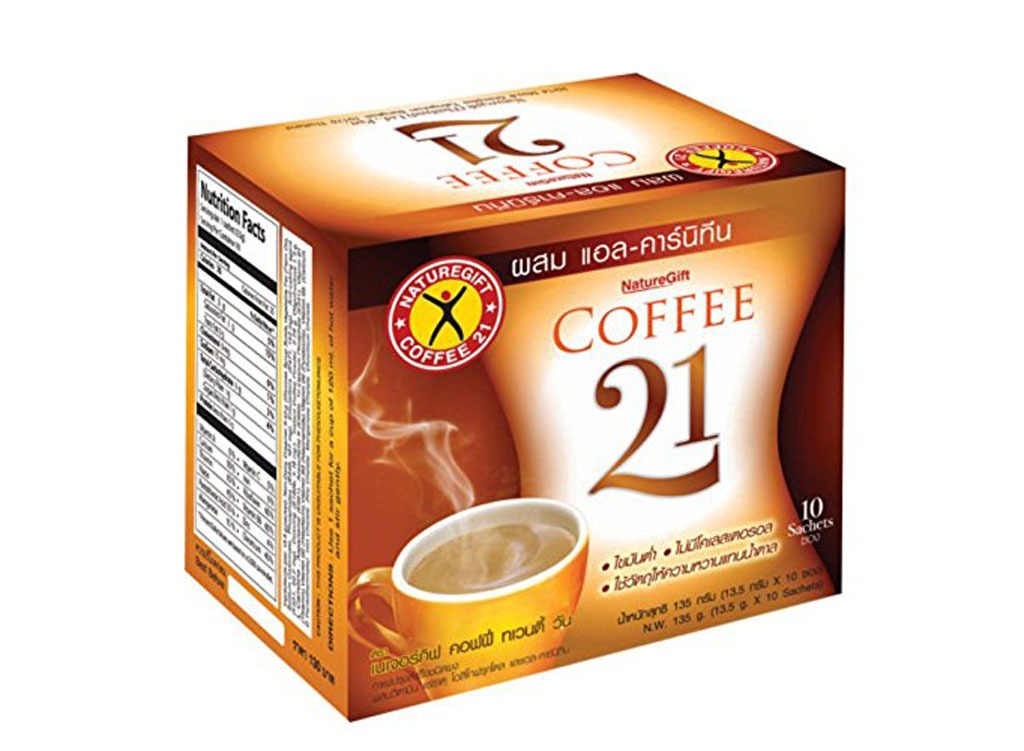
For Example: Coffee 21
n/a
It should come at no surprise that something as liquidy as coffee doesn't contain any fiber. This Thai Instant Coffee powder sought to change that. It markets itself by touting its added vitamins, minerals, and oligofructose—a fiber that could increase levels of good bacteria in the gut and enhances immune function.
The Bottom Line: If you can find it, we have no issues with adding a bit of fiber to your morning java. It's more important how you take your cuppa. Go easy on the sugar and consider adding a dash of heavy cream to help your body slowly absorb the caffeine for a more steady stream of energy.
White Bread
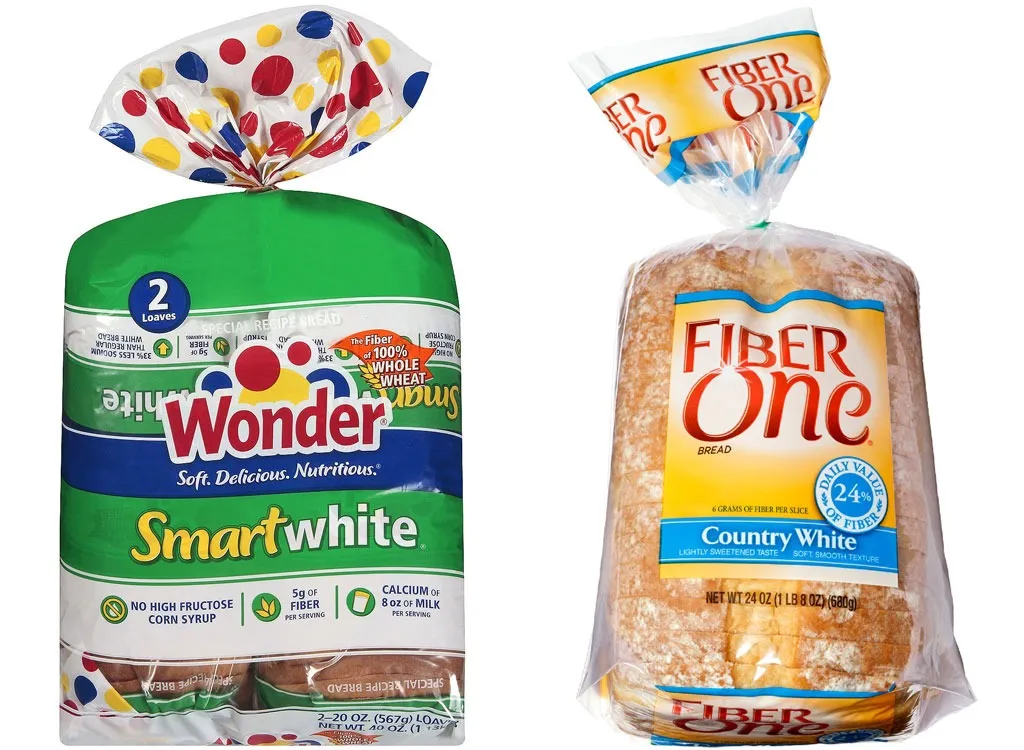
For Example: Wonder Bread Smart White
Per 2 slices: 100 calories, 1 g fat (0 g saturated fat), 200 mg sodium, 22 g carbs (5 g fiber, 4 g sugar), 5 g protein
For Example: Fiber One Country White Bread
Per 2 slices: 100 calories, 1 g fat (0 g saturated fat), 200 mg sodium, 24 g carbs (6 g fiber, 4 g sugar), 4 g protein
The whole point of white flour is that the fiber-rich portions of the grain have been removed. Instead of just making whole wheat bread, FiberOne and Wonder Bread instead chose to add chicory root extract, sugarcane fiber, cottonseed fiber, or soy fiber, which mostly act as bulking agents.
The Bottom Line: You'll reap the bulking benefits of fiber, but overall, both products would rank low on our 20 Best & Worst Store Bought Breads because they're made with high fructose corn syrup, sugar, a slew of gums and vegetable oils, as well as preservatives and emulsifiers that could contain artery-clogging trans fats.
Jam
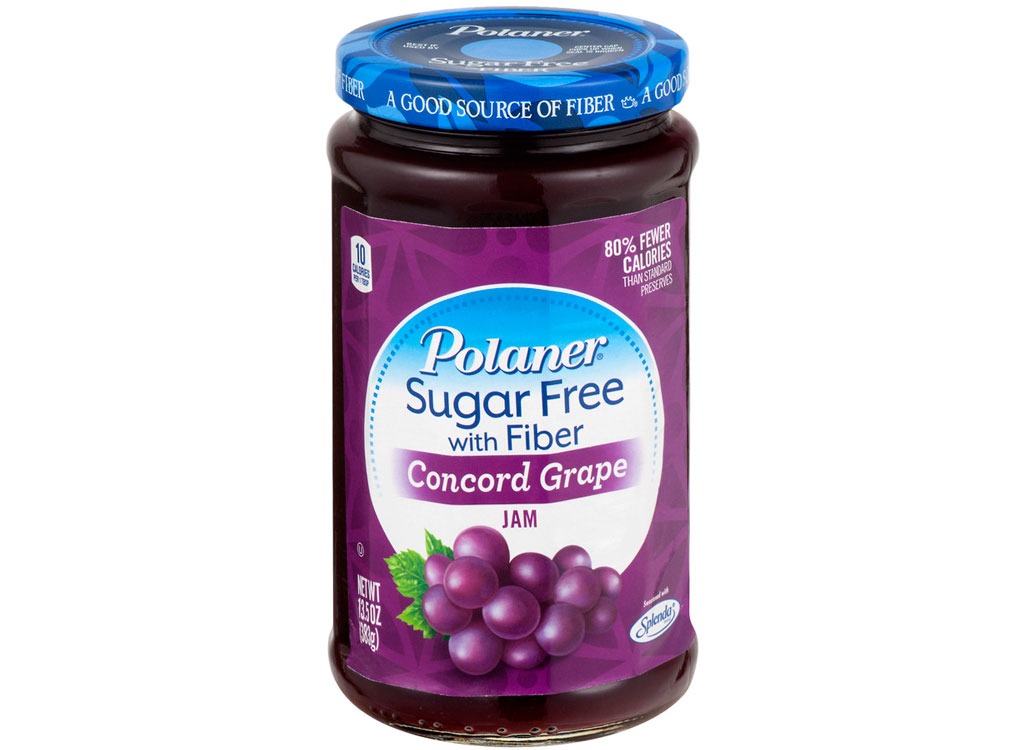
For Example: Polaner Sugar Free with Fiber Concord Grape Jam
Per 1 tbsp: 10 calories, 0 g fat (0 g saturated fat), 0 mg sodium, 5 g carbs (3 g fiber, 0 g sugar), 0 g protein
Yes, the same tablespoon of jam from Smucker's has an extra 12 grams of sugar in it, but the one thing you won't see? Fiber. That's because the entire process of making jam is releasing the fruit's soluble fibers—also known as "pectin"—from cells and dissolving them. Those three grams of fiber you see here likely come from the combination of maltodextrin, polydextrose, and locust bean gum—one of the few sources of a type of soluble fiber known as beta-glucan. This type of fiber, which you can also get from whole food sources such as overnight oats, has been found to help lower blood cholesterol levels, boost the immune system, increase satiety, and help regulate blood glucose levels. Most notably, beta-glucans form a gel in your small intestine, which helps delay nutrient absorption and can keep your blood sugar from spiking.
The Bottom Line: Although it could help regulate your blood sugar, Polaner's jam shouldn't be your go-to source for fiber. It's sweetened with the artificial sweetener sucralose, which a 2016 study published in the journal Cell Metabolism found may be recalibrating the connection between sweetness and calories in your brain. Researchers discovered that mice consumed 30 percent more calories when they switched from eating sucralose-sweetened food to sugar-sweetened food. The sweetener has also been connected to decreased sleep quality and poor gut health—a recipe for weight gain.
Fruit Snacks
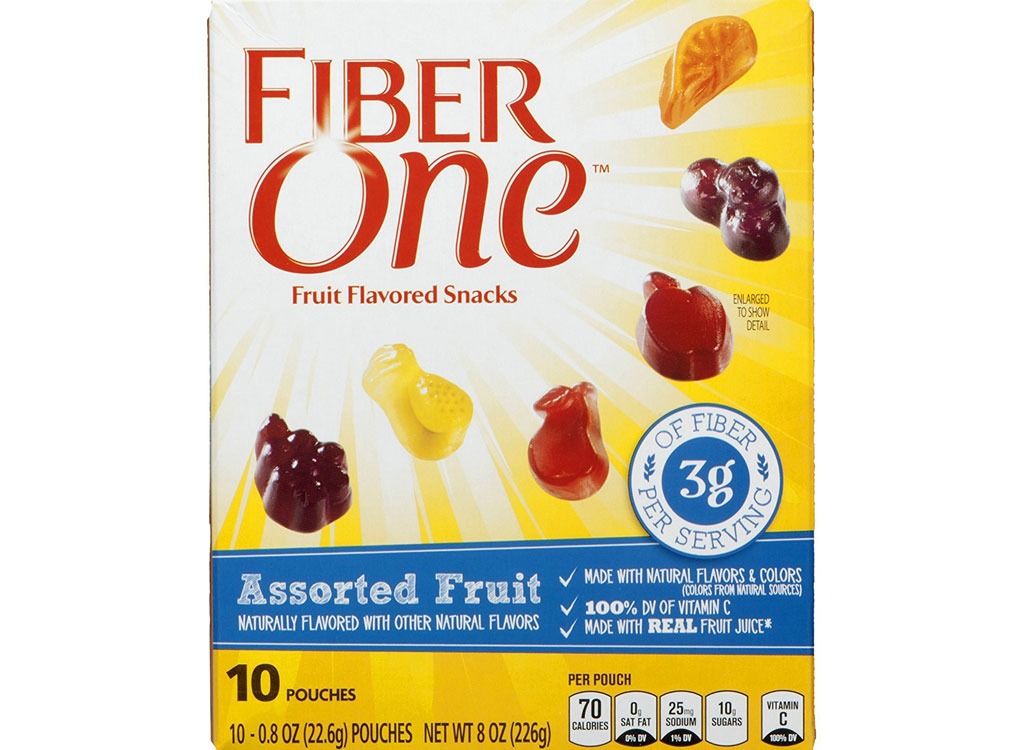
For Example: FiberOne Fruit Snacks
Per 1 pouch: 70 calories, 0 g fat (0 g saturated fat), 25 mg sodium, 19 g carbs (3 g fiber, 10 g sugar), 0 g protein
While fruit is one of the best sources of fiber, fruit snacks are not. Those three grams come from corn fiber and corn starch.
The Bottom Line: Made from fruit juice, sugar, and corn syrup, no "added fiber" can cover up the fact that this snack is not going to benefit your weight loss routine. Eat a real apple instead; it's just as portable!
Protein Shakes
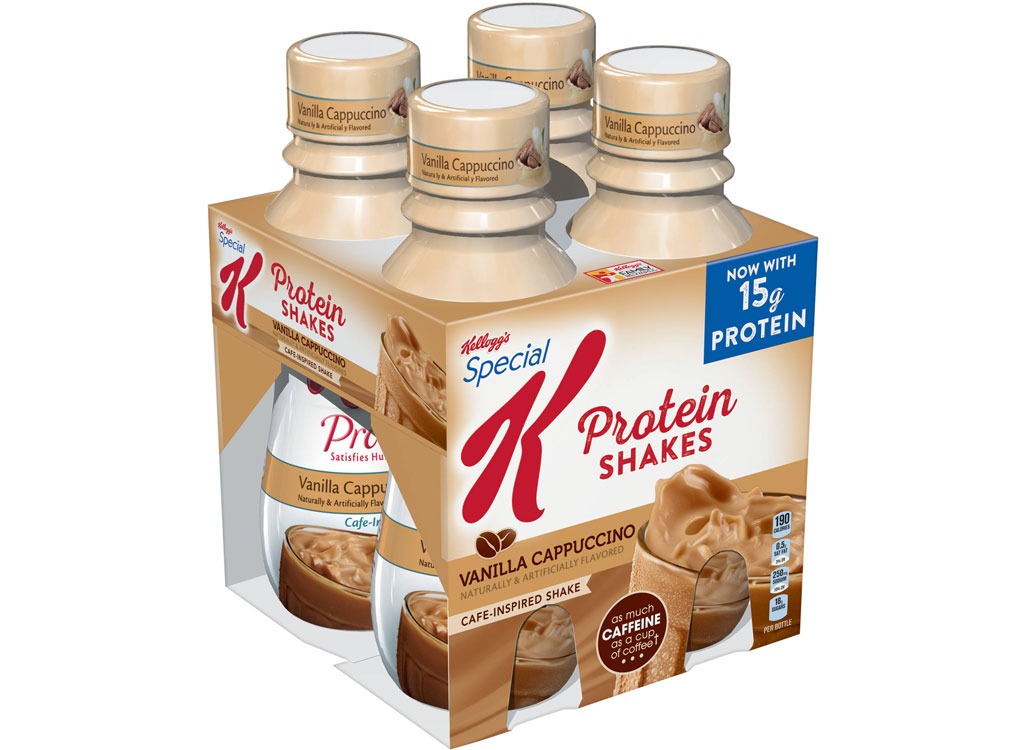
For Example: Special K Vanilla Cappuccino Protein Shake
Per 10 fl oz bottle: 190 calories, 5 g fat (0.5 g saturated fat), 250 mg sodium, 23 g carbs (5 g fiber, 18 g sugar), 15 g protein
The simplest protein shakes will have just protein and water. This one also contains added anti-inflammatory fiber polydextrose.
The Bottom Line: Although a 2013 study published in the British Journal of Nutrition found that polydextrose may help slow the rate at which food is broken down and nutrients like glucose are absorbed, it's still dwarfed by those 18 grams of sugar. Not to mention, Kellogg's also adds gut-harming artificial sweeteners sucralose and acesulfame potassium.
White Flour Tortillas
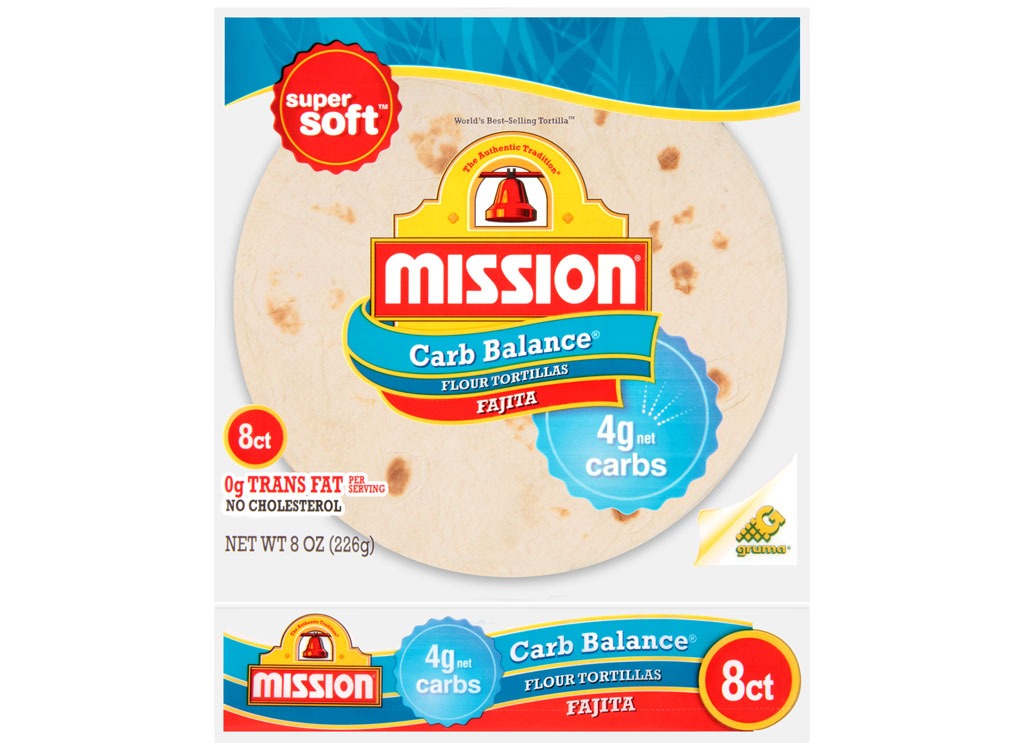
For Example: Mission Carb Balance
Per 1 tortilla: 80 calories, 2 g fat (1 g saturated fat), 190 mg sodium, 13 g carbs (9 g fiber, 0 g sugar), 3 g protein
One of Missions' Carb Balance tortillas contains 9 times the amount of fiber you'd find in a regular white flour tortilla. In this case, the company adds powdered cellulose—an additive most often derived from wood pulp—to increase the fiber content. You've likely heard of the ingredient being used as an "anti-caking agent" that prevents shredded cheese from clumping, but did you know the FDA also gave the additive the green light to qualify as fiber in your food? It's unfortunate since cellulose passes right through your GI tract, virtually unabsorbed, and "appears to have no effect other than providing dietary bulk, reducing the nutritive value of such foodstuffs, and possibly exerting a laxative effect (AKA it helps you poop)," according to a report by the FDA.
The Bottom Line: It could be a good thing that the bulky fiber is displacing other ingredients since these tortillas are also made with two possible sources of trans fats (hydrogenated vegetable oils and monoglycerides), artificial sweetener sucralose, and bleached flour. We still consider it a "Not That!"
Potato Chips
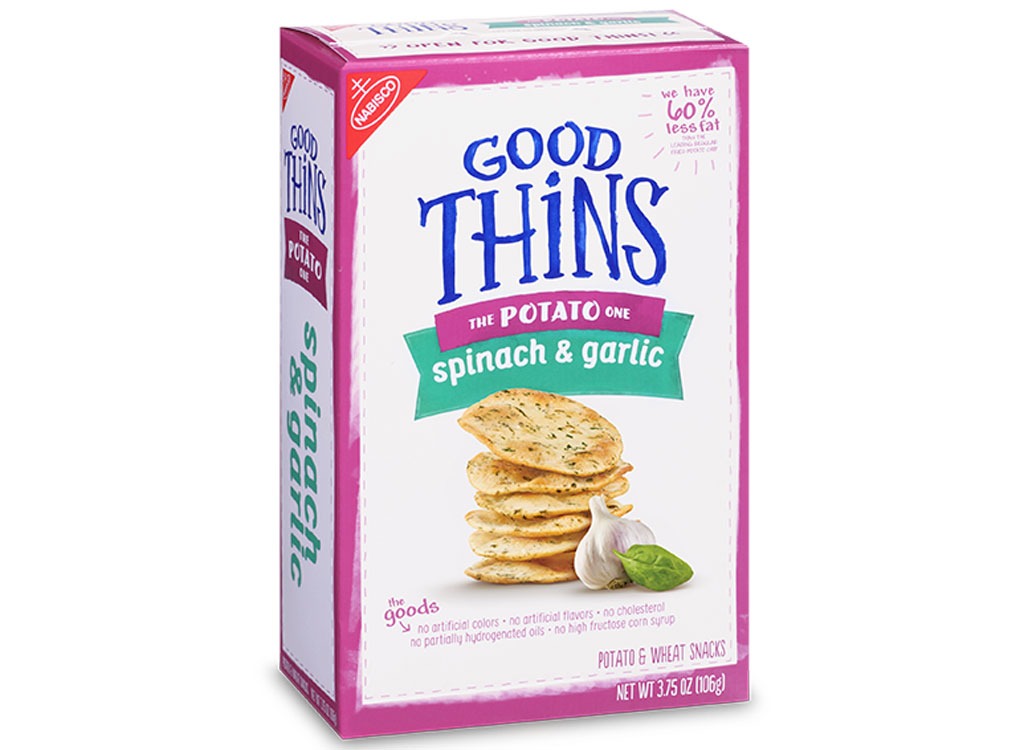
For Example: Nabisco Good Thins Potato Chips, Spinach & Garlic
Per 23 pieces: 130 calories, 4 g fat (0.5 g saturated fat), 190 mg sodium, 22 g carbs (3 g fiber, 1 g sugar), 2 g protein
The part of the potato which contains fiber is the peel, so there really shouldn't be any fiber present in these chips made from pulverized potato flour and cornstarch. The reason you see a three next to fiber is because of maltodextrin and oat fiber. These fibers have been connected to adding bulk to stool and lowering bad cholesterol, respectively.
The Bottom Line: We'd say these snacks are an "Eat This!" compared to regular fried potato chips since they have six fewer grams of fat (which are usually from inflammatory vegetable oils).
Maple Syrup
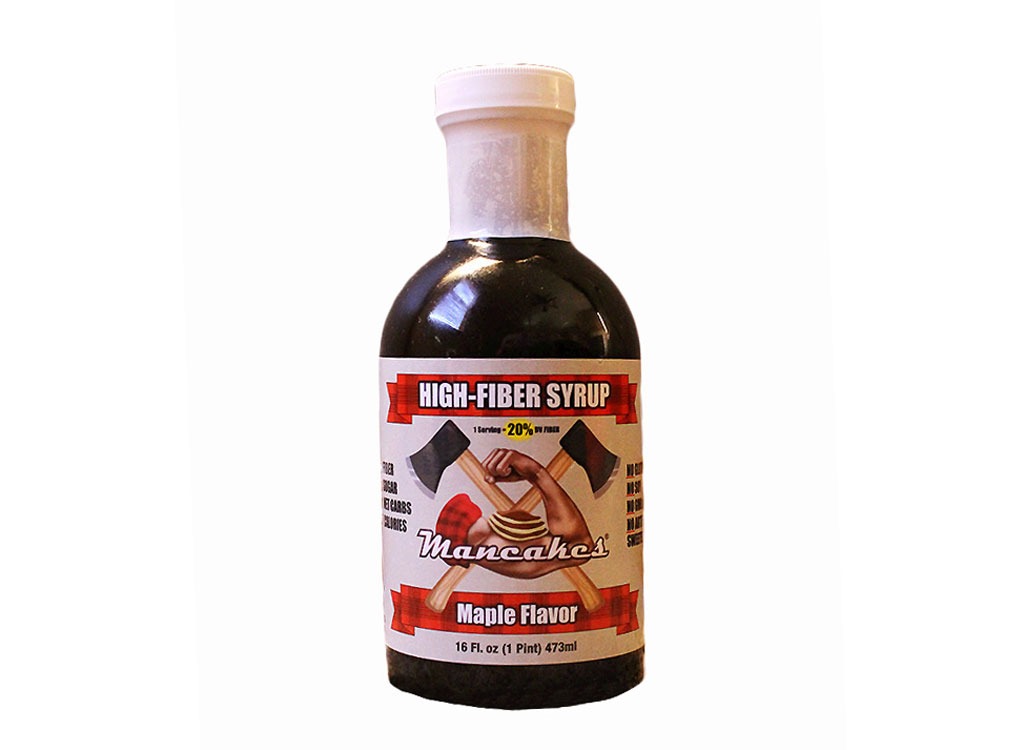
For Example: Mancakes High-Fiber Maple Flavor Syrup
Per 2 tbsp: 30 calories, 0 g fat (0 g saturated fat), 85 mg sodium, 11 g carbs (5 g fiber, 5 g sugar), 0 g protein
Pancake syrup is one of the most notorious foods you can't trust because many are marketed to look and taste like real maple syrup. On the contrary, these breakfast condiments are made of sugar and artificial flavoring. While Mancakes syrup isn't maple syrup either, it is better than brands like Mrs. Butterworth's. It's primarily water, but Mancakes Syrup also contains maple flavor, sugar, fruit juice color (instead of carcinogen-containing caramel color), and stevia. It's low in sugar and gets a fiber boost from dextrin, a slowly-digested soluble fiber extracted from wheat starch that studies have found to lower LDL ("bad") cholesterol and reduce the risk of coronary heart disease and diabetes.
The Bottom Line: If you don't want to splurge on real maple syrup, which is one of our highest ranked sweeteners, Mancakes is a better alternative than Aunt Jememia because it's lower in sugar and the dextrin fiber can help prevent post-meal blood sugar spikes, according to a 2014 study published in the International Journal of Pediatric Endocrinology.
